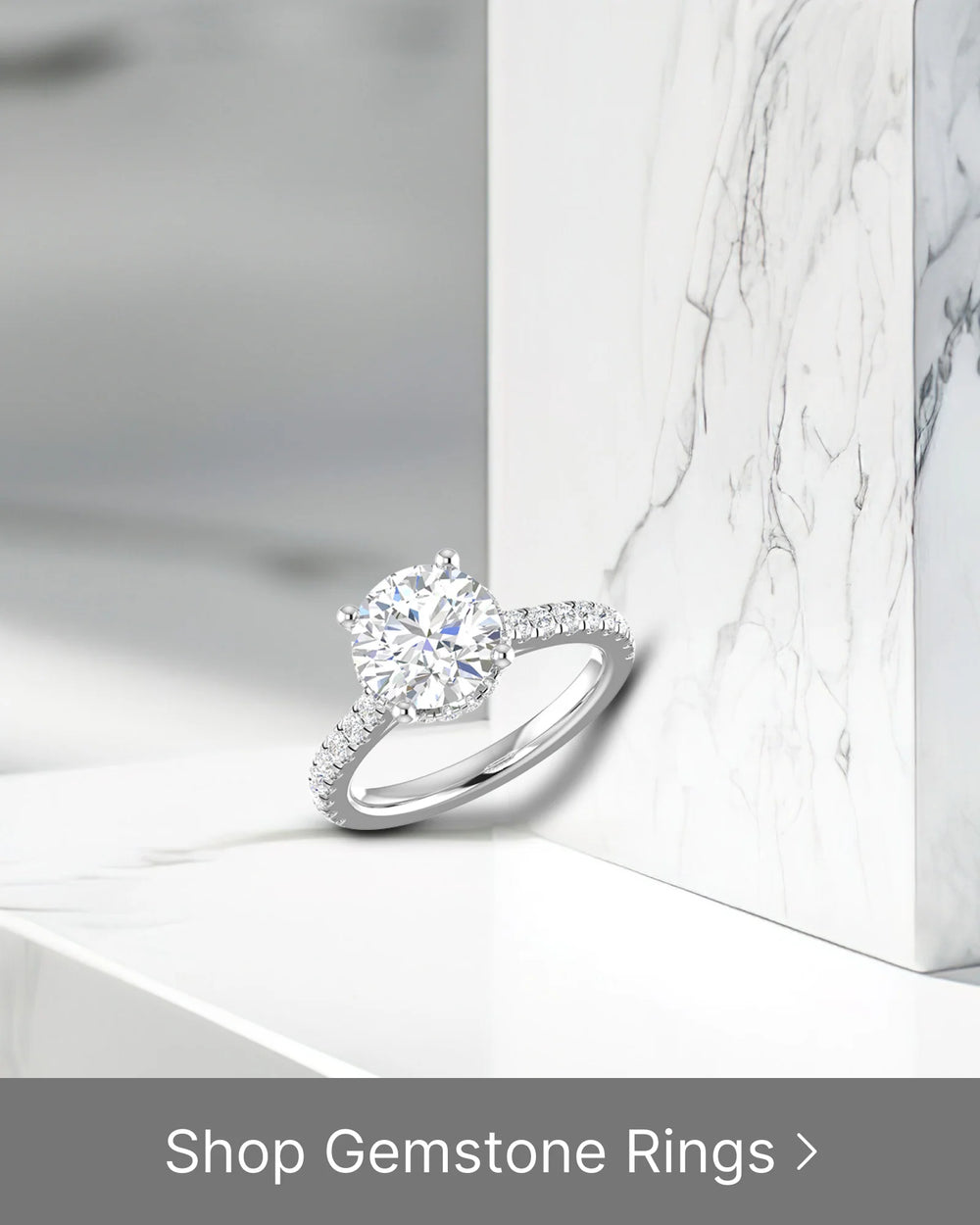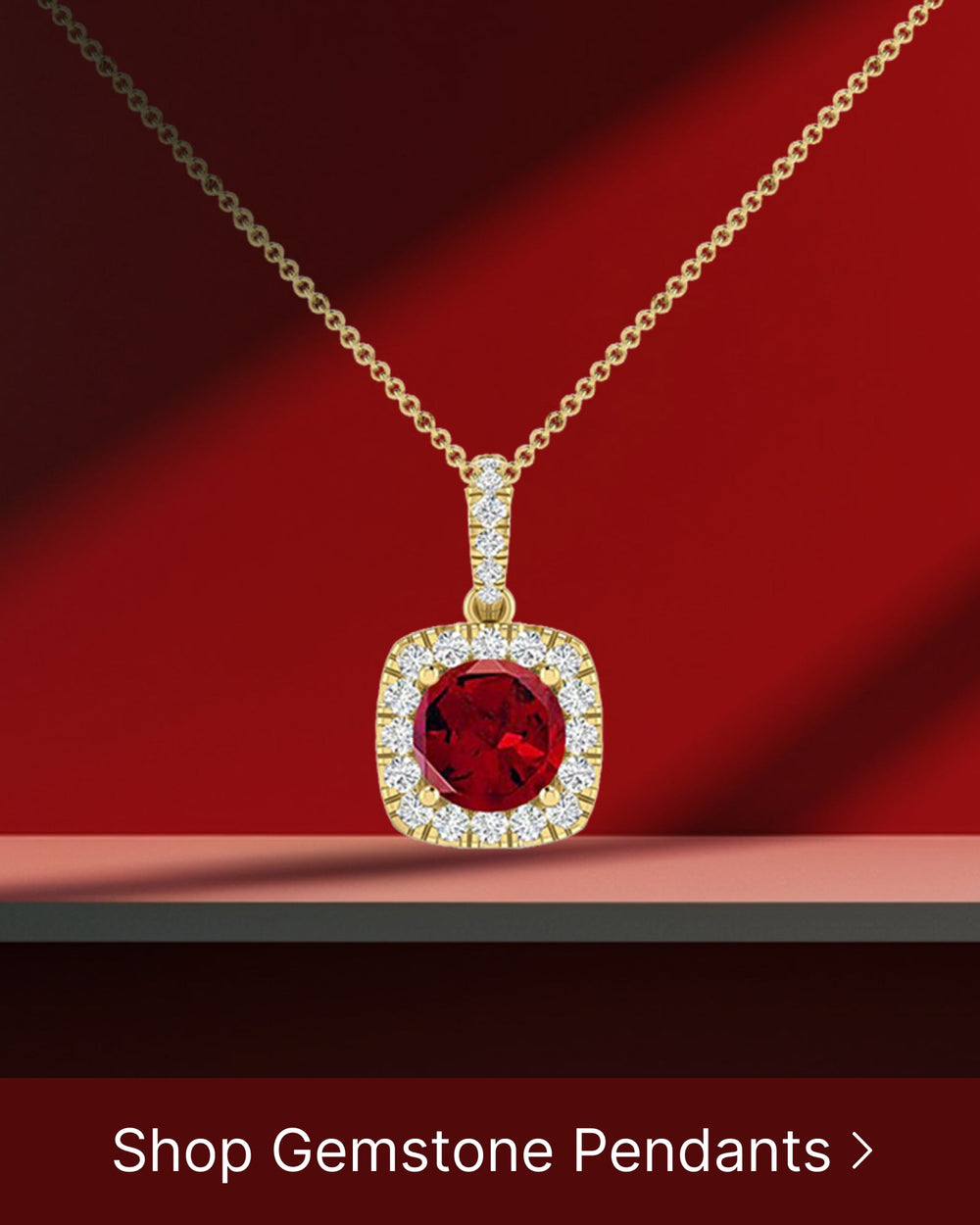Emeralds, with their mesmerizing green hue and captivating beauty, have long been considered the gemstone of royalty and renewal. These gems have a rich history and hold great significance in various cultures around the world. From their origins to their symbolism, value, and future, emeralds continue to enchant and fascinate both jewelers and enthusiasts alike.
Understanding the Origin of Emeralds
Emeralds are formed through a fascinating geological process that takes millions of years. It all begins deep within the Earth's crust, where intense heat and pressure interact with specific elements to create these remarkable gemstones.
As the molten rock, or magma, rises towards the surface, it carries with it various minerals and elements. Among these are beryllium, aluminum, silicon, and oxygen, which combine to form the mineral known as beryl. Beryl is a relatively common mineral, but what sets emeralds apart is the presence of chromium and vanadium.
Geological Formation of Emeralds
Emeralds owe their vibrant green color to the presence of chromium and vanadium in the beryl mineral. Over the course of centuries, mineral-rich fluids penetrate the cracks in the Earth's crust, depositing these elements and creating emerald formations.
These fluids, often referred to as hydrothermal fluids, are created when water interacts with the hot magma. The water dissolves minerals from the surrounding rocks and becomes enriched with various elements. As the hydrothermal fluids make their way through the cracks and fractures in the Earth's crust, they carry with them the necessary ingredients for emerald formation.
As the hydrothermal fluids cool down, the elements within them begin to crystallize. This slow cooling process allows large emerald crystals to form over time. These crystals can grow to impressive sizes, with some emeralds reaching several centimeters in length.
Once the emerald crystals have formed, they are often found within veins or pockets of rock. These veins can be several meters long and can contain numerous emerald crystals. However, the process of bringing these emerald formations to the surface is far from over.
Geological activities such as volcanic eruptions and tectonic movements play a crucial role in the transportation of emeralds. During volcanic eruptions, magma is expelled from the Earth's interior, carrying with it the emerald-bearing rocks. This volcanic material, known as tephra, can travel great distances before settling and solidifying.
Tectonic movements, on the other hand, involve the shifting and colliding of Earth's tectonic plates. These movements can cause the rocks containing emeralds to be pushed towards the surface. Over time, erosion and weathering expose these emerald-bearing rocks, allowing miners and gem enthusiasts to discover and extract these precious gemstones.
Historical Discovery of Emeralds
Emeralds have a long history dating back thousands of years. They were first discovered in ancient Egypt, where Cleopatra was known for her profound love for these gemstones. The Egyptians believed that emeralds symbolized fertility and rebirth, often burying important figures with emerald-adorned jewelry to accompany them on their journey to the afterlife.
The allure of these gems spread to other cultures, including the Greeks and Romans. The Romans believed that emeralds had the power to soothe the soul and improve eyesight. Emerald mines were found in places such as Austria, Egypt, India, and Colombia, fueling the demand for these precious gemstones.
Throughout history, emeralds have been highly valued and sought after. They have been used to create exquisite jewelry pieces, adorn royal crowns, and even decorate religious artifacts. The mesmerizing green hue of emeralds continues to captivate people to this day, making them one of the most coveted gemstones in the world.
The Symbolism of Emeralds
Emeralds have a rich symbolic significance that has transcended time. In ancient cultures, emeralds were believed to possess mystical and healing properties. The vibrancy of their green color was associated with fertility, growth, and the abundance of nature.
But the symbolism of emeralds goes even deeper than that. Let's explore the fascinating history and cultural significance of these precious gemstones.
Emeralds in Ancient Cultures
Ancient civilizations revered emeralds as a symbol of renewal and immortality. In Hindu mythology, emeralds were believed to bring harmony and balance to relationships. The Incas of Peru regarded emeralds as sacred stones, with the belief that they held the power of the Earth's life force.
Imagine the awe and reverence these ancient cultures must have felt when gazing upon the mesmerizing green brilliance of an emerald. It was not just a stone, but a gateway to the divine, a conduit for spiritual energy.
Emeralds and Their Connection to Royalty
Throughout history, emeralds have been associated with royalty. They were favored by monarchs and nobles for their regal appearance and believed to bring prosperity and power. Royal families adorned themselves with emerald jewelry, including crowns, necklaces, and tiaras, as a symbol of their status and wealth.
One can only imagine the opulence and grandeur of a royal court, where emeralds sparkled on the fingers, necks, and ears of kings and queens. The emerald's allure was not just about its beauty, but the power and prestige it bestowed upon those who possessed it.
Emeralds as a Symbol of Renewal
Emeralds are often associated with new beginnings and positive transformation. The lush green color, reminiscent of the freshness of spring, represents growth and rejuvenation. This makes emeralds a popular choice for engagement rings, signifying a new chapter in a couple's life.
Imagine the joy and excitement of a couple as they exchange vows, with an emerald symbolizing their commitment to a future filled with growth, love, and new possibilities. The emerald becomes more than just a piece of jewelry; it becomes a talisman of hope and renewal.
So, the next time you see an emerald, take a moment to appreciate its rich symbolism and the stories it carries from ancient civilizations to modern times. It is not just a gemstone; it is a window into our collective human history, a reminder of our eternal quest for meaning and beauty.
The Value of Emeralds
The value of emeralds is determined by various factors, including their color, clarity, carat weight, and cut. These factors can significantly influence the worth of an emerald and make each gem unique in its own right.
Factors Determining the Worth of Emeralds
The most crucial factor in determining an emerald's value is its color. The most sought-after emeralds have a vibrant, intense green hue with a slight bluish undertone. This captivating color is often associated with lush landscapes and the beauty of nature. Emeralds with a deep, rich green color are highly desired and command higher prices in the market.
Clarity also plays a role in the value of emeralds. Inclusions, or internal flaws, are common in emeralds due to their formation process. However, emeralds with fewer inclusions are considered more valuable. These rare emeralds with excellent clarity are highly prized by collectors and enthusiasts.
Carat weight is another important factor that affects the value of emeralds. The carat weight determines the size and rarity of the gem. Larger emeralds are generally more valuable, especially if they possess exceptional color and clarity. However, it is important to note that carat weight alone does not determine the quality of an emerald; the other factors must also be considered.
The cut of an emerald also contributes to its value. The cut determines the gem's brilliance and overall shape. Skilled lapidaries carefully shape emeralds to maximize their beauty and enhance their natural characteristics. Well-cut emeralds exhibit excellent light reflection and sparkle, adding to their allure.
Emeralds in the Modern Jewelry Market
In the modern jewelry market, emeralds continue to be highly prized. They are often featured as center stones in exquisite rings, pendants, and earrings. Many jewelry designers embrace the uniqueness of each emerald, creating pieces that highlight the gem's individual character and natural beauty.
Emeralds are frequently paired with other gemstones, such as diamonds or sapphires, to create stunning and eye-catching designs. The combination of emeralds with other gems adds depth and contrast to the jewelry, making it even more captivating.
One of the reasons emeralds are so popular in modern jewelry is their versatility. They can be incorporated into various styles, from classic and traditional to contemporary and avant-garde. Whether set in yellow gold, white gold, or platinum, emeralds always make a statement and exude elegance.
Furthermore, emeralds have a long history of being associated with royalty and wealth. They have adorned the crowns and jewelry of kings and queens throughout the ages. This rich history and symbolism add to the allure of emeralds, making them highly sought after by collectors and enthusiasts alike.
When purchasing emeralds, it is essential to consider their value factors and authenticity. Reputable jewelers and gemologists can provide expert guidance and certification to ensure that you are acquiring a genuine and valuable emerald.
Caring for Your Emerald Jewelry
Proper care is vital to ensure the longevity and luster of emerald jewelry. By following a few simple guidelines, you can keep your cherished emerald pieces looking radiant for years to come.
Cleaning and Maintenance Tips
Emeralds are relatively delicate gemstones, and appropriate cleaning methods are essential. Avoid using harsh chemicals or ultrasonic cleaners that could damage the gem. Instead, gently clean your emerald jewelry with a soft cloth and mild soap, rinsing it thoroughly with lukewarm water. Regular maintenance, such as checking the settings for any loose stones, is also recommended.
Proper Storage for Emeralds
Storing your emerald jewelry carefully is crucial to prevent scratches or damage. Ideally, keep your emeralds separated from other jewelry to avoid unnecessary friction. Store them in a lined jewelry box or a fabric-lined pouch to protect them from moisture and excessive sunlight, which can fade the gem's color over time.
The Future of Emerald Mining
The mining industry is evolving to embrace sustainable practices and advancements in technology. This holds great promise for the future of emerald mining, ensuring the preservation of these precious gemstones and the communities that rely on them.
Sustainable Practices in Emerald Extraction
With a growing concern for the environment, sustainable practices in emerald extraction are becoming increasingly important. Responsible mining techniques minimize the impact on local ecosystems and prioritize the well-being of the communities surrounding the mines. These practices aim to restore the land to its previous state once mining operations have ceased, ensuring the land's long-term sustainability.
Technological Advancements in Emerald Mining
As technology continues to advance, so does the efficiency and accuracy of emerald mining operations. Modern techniques enable miners to locate and extract emeralds with greater precision, minimizing waste and reducing the environmental impact. New methods also help identify and differentiate natural emeralds from synthetic or treated ones, ensuring transparency and trust within the industry.
Emeralds truly are the gemstones of royalty and renewal. Their mesmerizing beauty, rich symbolism, and enduring allure continue to captivate generations. Whether worn as a cherished heirloom or a symbol of personal transformation, emeralds have a timeless and mystical quality that will always hold a special place in the world of gemstones.






